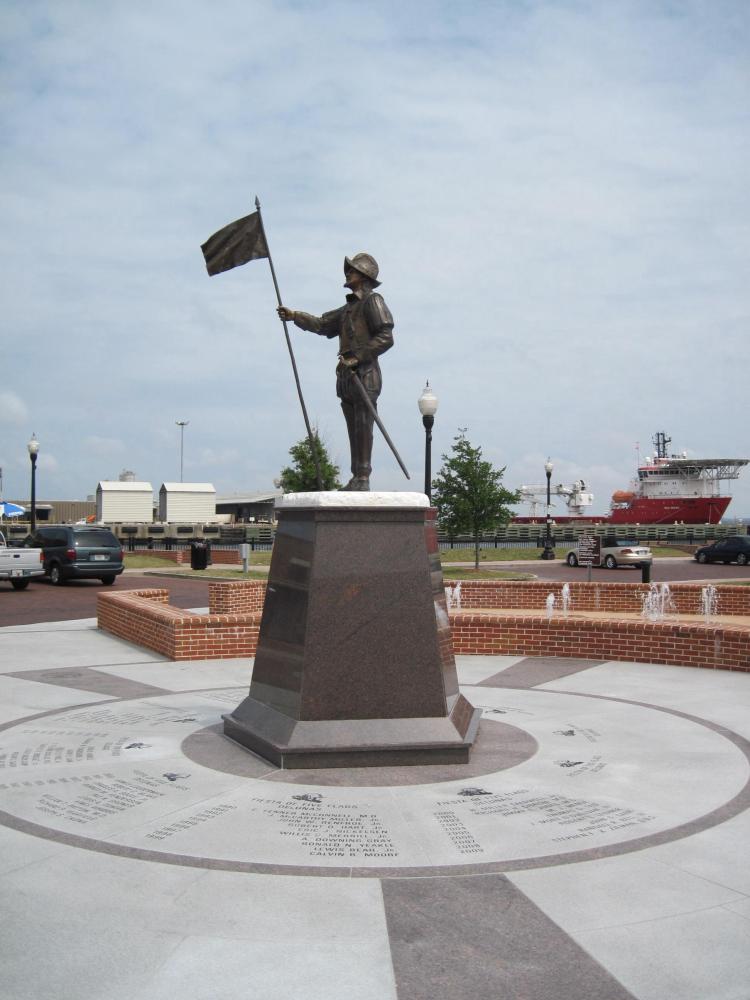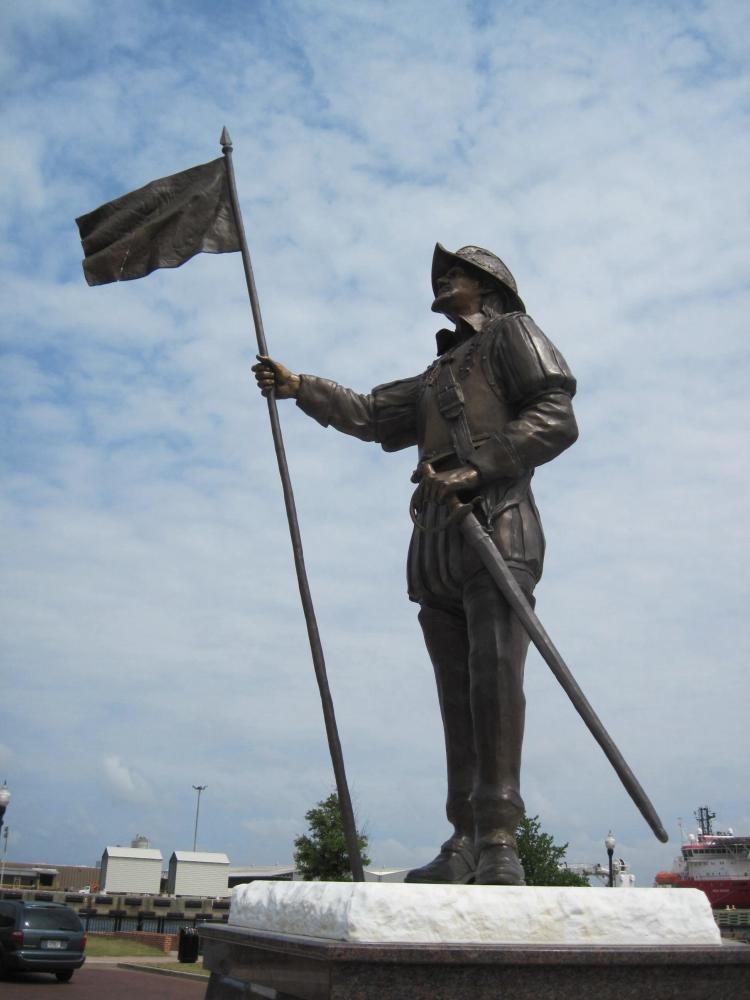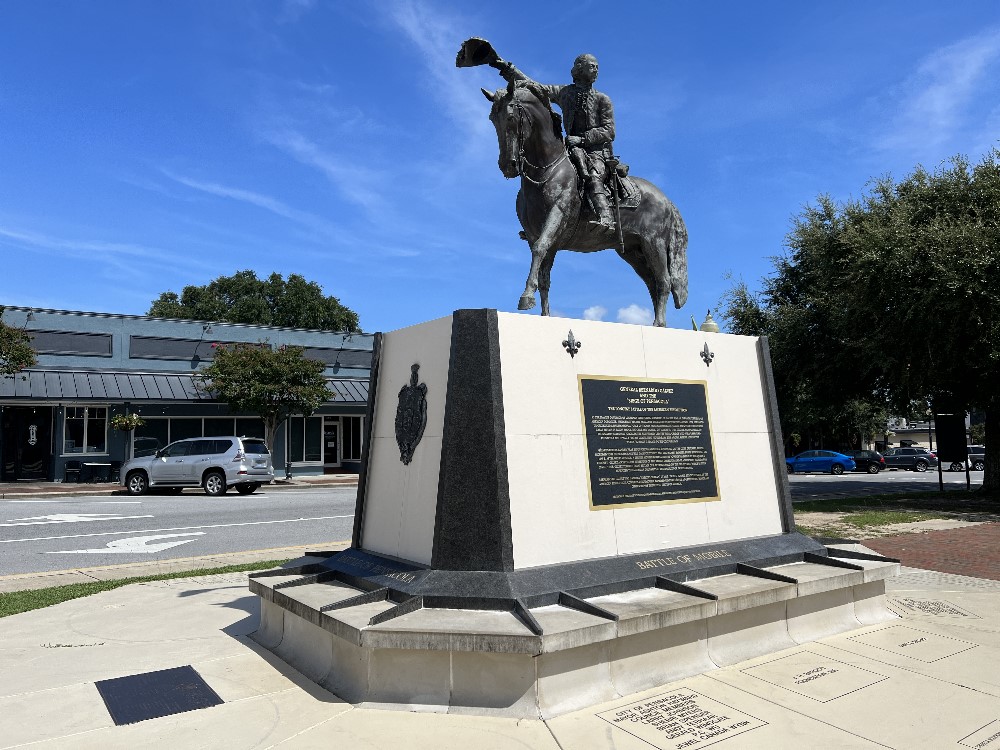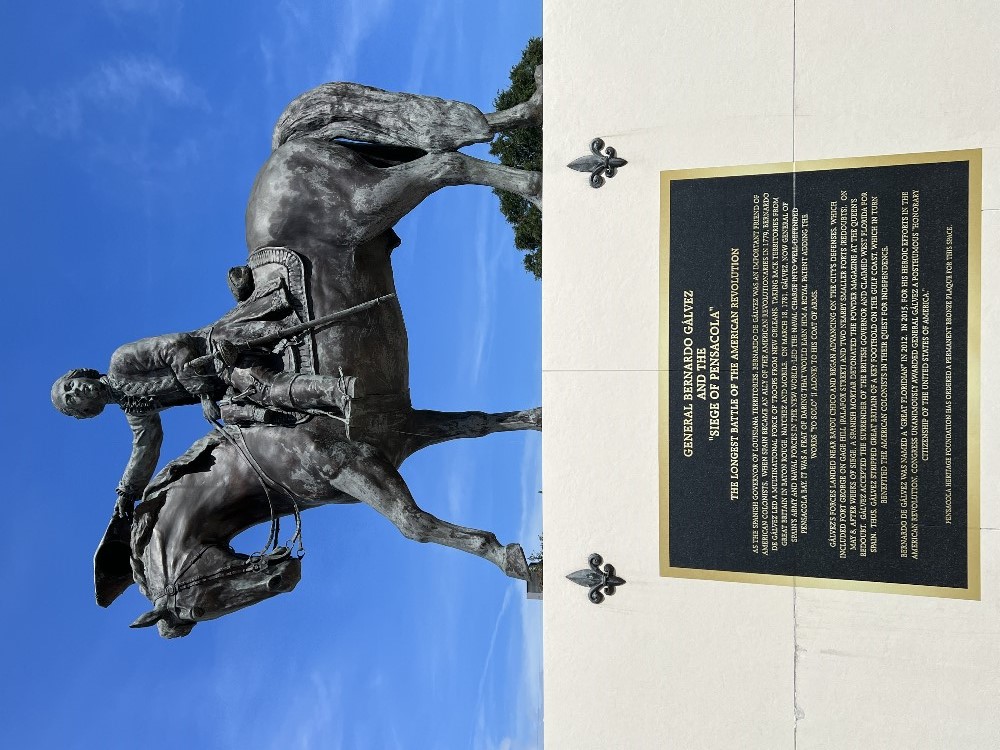History of Colonial Pensacola
See also: Spanish Soldiers / Primary Source Records of American Pensacola
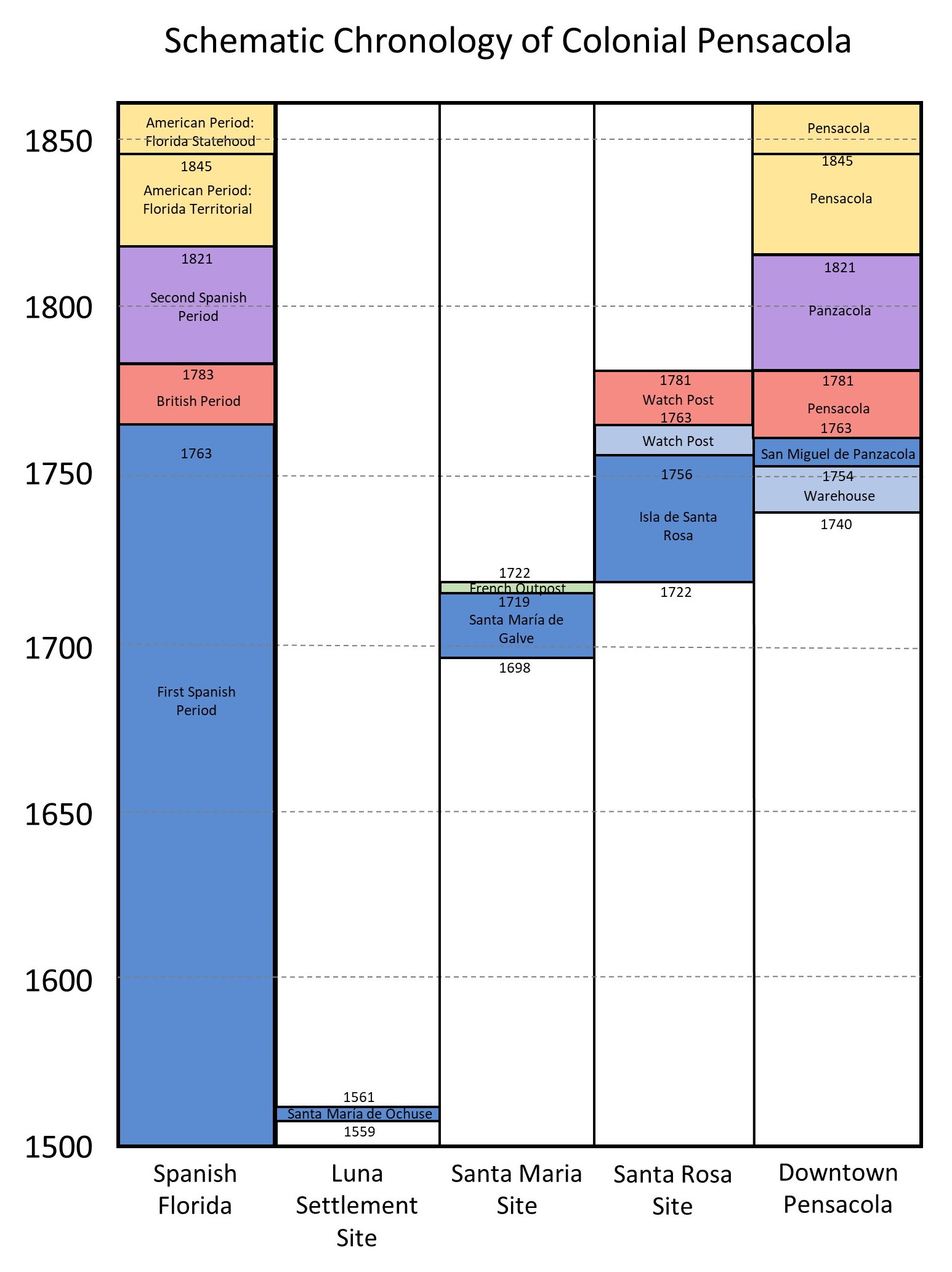 The modern city of Pensacola sits atop the location of the fourth Spanish colonial settlement on Pensacola Bay, which started as a mainland warehouse with a handful of garrisoned Spanish soldiers based in presidio Isla de Santa Rosa after 1740, but which became the residence of the majority of Santa Rosa's soldiers and families beginning in the summer of 1754, two years after a massive hurricane devastated that presidio. The official start of presidio San Miguel de Panzacola was by viceregal decree dated July 14, 1756, marking the official beginning of Spain's final, and ultimately the first permanent, colonial town in West Florida. Below is a brief chronology that details some of the history of this location both before and after its 1756 foundation of San Miguel, and its transformation into the town of Pensacola over the next decades.
The modern city of Pensacola sits atop the location of the fourth Spanish colonial settlement on Pensacola Bay, which started as a mainland warehouse with a handful of garrisoned Spanish soldiers based in presidio Isla de Santa Rosa after 1740, but which became the residence of the majority of Santa Rosa's soldiers and families beginning in the summer of 1754, two years after a massive hurricane devastated that presidio. The official start of presidio San Miguel de Panzacola was by viceregal decree dated July 14, 1756, marking the official beginning of Spain's final, and ultimately the first permanent, colonial town in West Florida. Below is a brief chronology that details some of the history of this location both before and after its 1756 foundation of San Miguel, and its transformation into the town of Pensacola over the next decades.
As a local-area supplement to my main Spanish Florida page, I am also posting some selected document searches as well as document transcripts from the Second Spanish Period in Pensacola, particularly surrounding the 200-year anniversary of the city's transfer to United States jurisdiction in 1821. I have also posted a selection of American Period primary source documents available online, mostly for my students (or anyone else) researching post-colonial Pensacola.
While Pensacola has no original standing structures from the First Spanish or subsequent British Periods (the oldest standing structure is the "Water Battery" of San Antonio at Fort Barrancas, finished in 1797), two recent statues located downtown commemorate Pensacola's most famous Spanish colonial figures, Tristán de Luna (1559) and Bernardo de Gálvez (1781), shown below:
Colonial Chronology of Downtown Pensacola
before 1740: No documented European occupation in this location.
1740-1763: Late First Spanish Period occupation (through the 1763 transfer of Florida to Britain); details below.
1740-1754: Small garrison of 9 men posted to guard the newly-built warehouse for the Santa Rosa presidio at the mainland location then known as San Miguel de Punta Blanca.
1754-1756: Hundreds of soldiers and their families move from hurricane-ravaged Santa Rosa to San Miguel, and both public and private structures are built in the vicinity of the old warehouse.
1756: Official transfer of the presidio formalized under the name San Miguel de Panzacola.
1757: Rumors of impending Creek Indian attacks prompts the rapid construction of a new stockade fort surrounding the core of the settlement (extending from the modern Wentworth Museum to Christ Church; see diagram to right).
1758: Formal peace treaty with the Creeks results in continuing expansion of Spanish occupation outside the fort.
1761: Open warfare with the Creeks results in the demolition of structures outside the fort and the relocation of all occupation within the stockade walls (including the destroyed Apalachee and Yamasee missions).
1761-1763: Renewed peace with the Creeks results in continued expansion of Spanish occupation, including the establishment of a new refugee mission community just east of the fort.
1763-1781: British Period occupation (through the 1781 Spanish capture of Pensacola)
Several major expansions of the fortifications at Pensacola (now between Ferdinand Plaza and Seville Square; see diagram above), and the survey and granting of numerous town lots surrounding the fort, and garden lots just inland to the north.
1781-1821: Second Spanish Period (de facto Spanish occupation formalized by the 1783 Treaty of Paris, lasting through the 1821 transfer of Florida to the United States)
Continued expansion of residential settlement using a slightly modified version of the old British land lot grid, and the gradual dismantlement of fortifications around the old fort district (though a stockade was built around the entire city in 1799).
after 1821: American Period (Florida Territorial Period through 1845)
Continued transformation of downtown from a military district to an urban center.
Selected Digitized Document Searches in PARES
Selected Post-1763 Document Transcripts
Second Spanish census records have been compiled, transcribed, and printed in the following book, available digitally via free loan:
The Spanish Censuses of Pensacola, 1784-1820: A Genealogical Guide to Spanish Pensacola, by William S. Coker and G. Douglas Inglis (Perdido Bay Press, 1980).
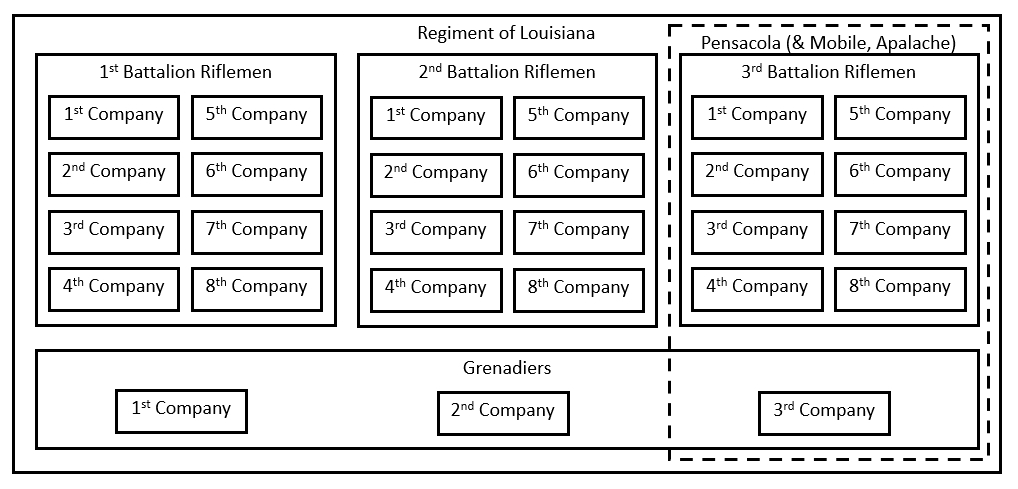 Below are my own transcriptions of military rosters for the Regimiento Fijo de Luisiana, or Fixed Regiment of Louisiana, of which Pensacola formed a part. The regiment was involved in the 1781 conquest of Pensacola from the British, and in 1787 the 3rd Battalion was specifically created to staff Pensacola long-term, as shown in the diagram to the right.
Below are my own transcriptions of military rosters for the Regimiento Fijo de Luisiana, or Fixed Regiment of Louisiana, of which Pensacola formed a part. The regiment was involved in the 1781 conquest of Pensacola from the British, and in 1787 the 3rd Battalion was specifically created to staff Pensacola long-term, as shown in the diagram to the right.
